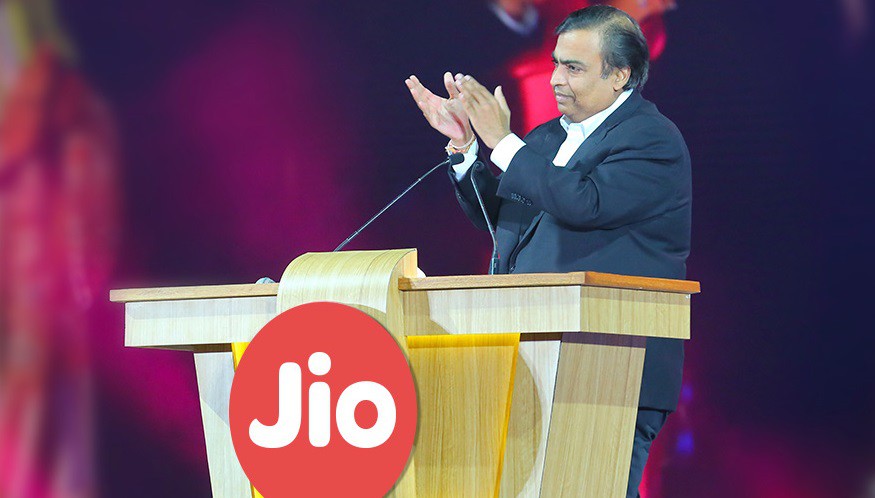
India will start enjoying 5G this Diwali with Reliance Jio. Here are their rollout plans.Source: Jio.com
What’s slowing down India’s 5G rollout?
- Lack of financial bandwidth and the need for massive fiber investment will cause delays in the deployment of 5G throughout India
- The main issue hindering India’s 5G rollout is the cost to fiberize the network
- Will India miss the 5G bus? It’s likely, says parliamentary committee
India had plans back in 2018 to rollout 5G services as soon as possible, aiming to capitalize on the better network speeds and strength that the next-generation technology promised.
However, if switching to 4G from 3G is all about rationalizing capacity by Indian telecom operators, 5G’s clarion call is about fiberization. The issue is that the cost to roll out fiber network infrastructure is expensive, and it comes on top of spectrum band costs that are sky-high at current prices.
According to a report, 5G technology dictates that network fiberization levels need to be at 70%, versus the 25%-30% levels at present. The report estimates that if each telecommunications carrier is to reach that level individually, Indian telcos may need investments of up to Rs1 lakh crore (($15.38 Billion) solely in laying fiber networks over the next two to three years.
A February report by the Parliamentary Panel on Information Technology said that India will not be able to launch 5G services until the end of 2021 or early in 2022. The report blames India’s Department of Telecommunications (DoT) for not doing enough to ensure a speedier launch of the new technology.
As it is, India typically lags in developed markets when it comes to the launch of new wireless technologies. It had sought to change this with 5G, allocating funds and setting up 5G to support the new technology. “It is likely that after missing the 2G, 3G, and 4G bus, India is going to miss 5G opportunities, unless time-bound action is taken in core areas where governmental intervention is required,” the report said.
Why is India not ready for the 5G rollout?
Among the first observations made by the committee is the fact that despite the DoT having submitted a report on the steps to make India 5G ready as early as August 2018, there was very little on-the-ground progress. In its report, the committee said the first serious issue was the lack of various approvals concerning spectrums, such as uncertainty around auctions, high reserve price of spectrum, inadequate and poor development of test cases, the low reach of optical fiber across India, and deficient back-haul capacity.
The findings come after authorities modified rules to allow 5G rollout on the currently licensed spectrum. India plans to auction the 5G-suitable spectrum in the 3.3-3.6GHz range later this year, while also planning to run 5G trials later this year. Bharti Airtel, India’s second-largest service provider, recently demonstrated the use of the 1800MHz spectrum to provide 5G services. That combined with new rules mean operators could feasibly launch 5G services later this year, after the conclusion of a 4G spectrum auction next month.
India’s biggest operator Reliance Jio is aiming for a 5G launch in the second half of this year. Yet even if the operators manage to launch 5G services in 2021, India is still far behind many other countries on service rollout. Low tariffs and telco debts put India’s operators in a difficult position given the vast sums that technology pioneers commit to research and development.
As per the findings and observations of the parliamentary standing committee, the country must expedite its approvals process and sort out issues such as spectrum auctions, back-haul capacity, pricing, and user test cases, to catch up with other countries which have taken a lead in 5G network deployment.
Though the DoT informed the committee that there could be some 5G network rollout in late 2021 or early 2022, it would mostly be in very selected areas where the demand would justify the capital expenditure put in by the telecom companies as well as the government.
India would, therefore, continue to use the 4G network for the next five to six years and by that time, 5G will have been rolled out to cover 20% of the world population, which is likely to exclude a major portion of the world’s largest democracy. Comparing it to the deployment of older technologies such as 2G, on which India was late by four years, 3G on which India was as much as a decade behind, and 4G on which India missed by the bus by seven years, the committee concluded that “sufficient preparatory work had not been undertaken for the launching of 5G services in India.”
READ MORE
- Strategies for Democratizing GenAI
- The criticality of endpoint management in cybersecurity and operations
- Ethical AI: The renewed importance of safeguarding data and customer privacy in Generative AI applications
- How Japan balances AI-driven opportunities with cybersecurity needs
- Deploying SASE: Benchmarking your approach


